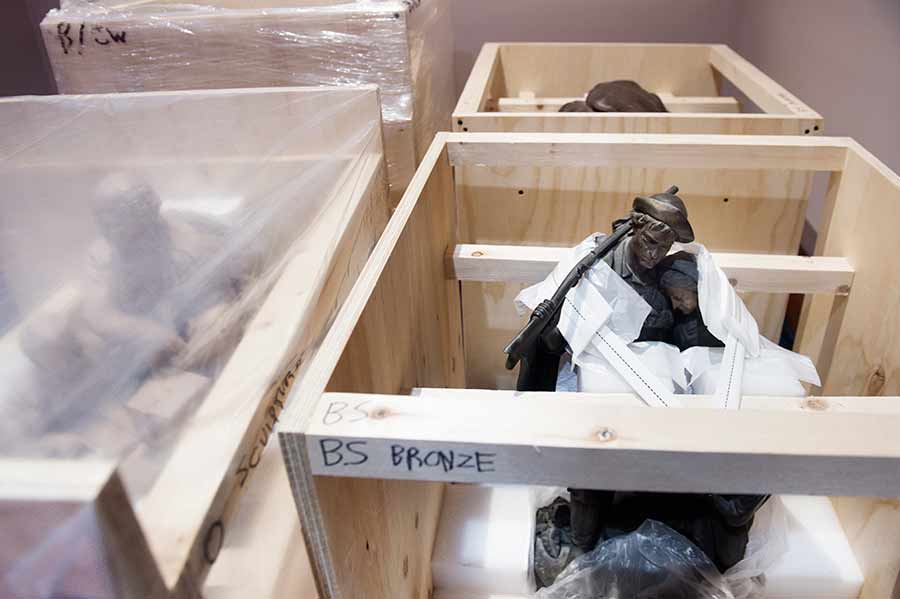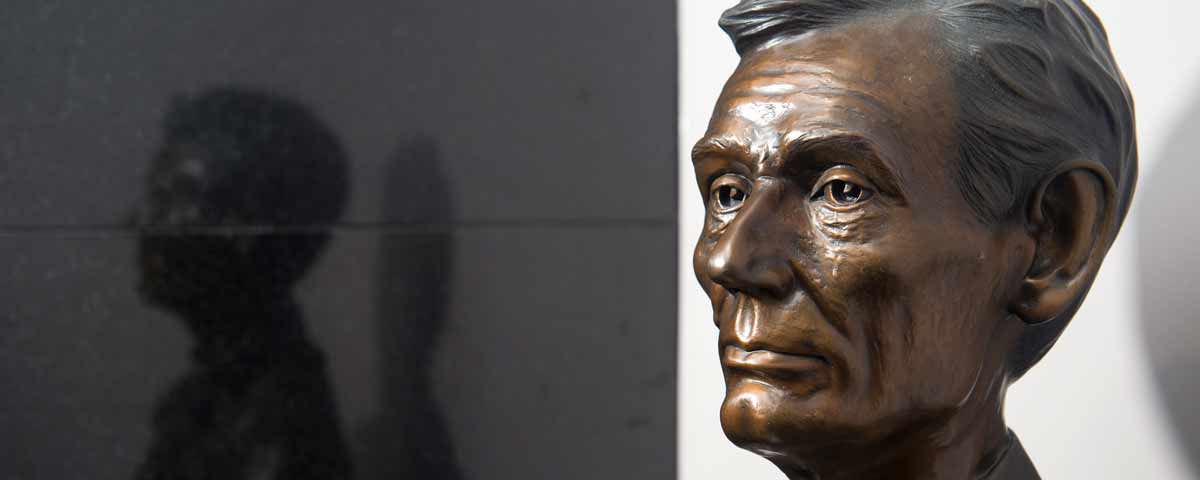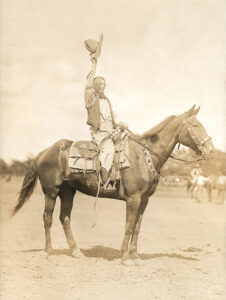
Frank Williams grew up in Cranston, R.I., and rose to serve as chief justice of the Rhode Island Supreme Court. He de-stresses by baking, cooking, and writing, but his most longstanding hobby is collecting items related to Abraham Lincoln and the Civil War. He and his wife Virginia recently donated one of the world’s largest private Lincoln collections to Mississippi State University in Starkville, where it joins the U.S. Grant Presidential Library. The items, ranging from books and pamphlets to sculptures and ephemera, will be housed in a new 22,000-square foot facility. Rotating exhibits will feature collection items.
CWT: How did you get your start as a collector?
FW: In 1952, when I was 12, in the sixth grade, we were seated by last name, last row, last seat and I always kind of resented that, but I sat under this portrait, a full-length portrait or engraving of Lincoln, and I loved the face. I was already into U.S. history. My mother read a lot to me and I had a good teacher who saw this interest and encouraged me. Not long after, I was using my lunch money, 25 cents a day, to buy used books on Lincoln, like the Carl Sandburg biography. When I was 13, I wanted to be a lawyer because Lincoln was such a good lawyer. I never deviated from that even when I majored in history and government. I spent almost five years in the military, mostly abroad, and then back to law school, which only increased my interest in collecting and reading and eventually writing about Abraham Lincoln.
CWT: When did you expand from books to other items?
FW: You’re not making much money at 13 years old. My father’s business was in landscape construction, and I did manage to get money together to buy Leonard Volk’s sculpture of Lincoln’s face. Volk took Lincoln’s life mask and his hands and made plaster of Paris, and then he would create the mold, then add ears and hairs. This little bust came from that, and it is still on my desk in my chambers at the Rhode Island Supreme Court.
[quote style=”boxed” float=”right”]We didn’t even know how much material we had until it was being packed[/quote]
CWT: Were these items all in your home?
FW: We had two libraries in the house, one in the upper level, which was for all Lincoln and related items, and one in the sub level, which was Civil War and collateral with other artifacts and ephemera. Other items in a guest house next door, some more in my chambers in the city in Providence, and some books in storage. When the fine art movers came last month, they had to go to four locations and the bank vault, which held the handwritten manuscripts from Lincoln. They spent 2½ weeks here packing. They did it by room, then they packed all the statuary in boxes with foam rubber cavities. Larger items in wooden crates. When they went to Mississippi State University (MSU) in Starkville it was two semitrailers holding 22 pallets containing 242 boxes and the wooden crates holding the large statuary.
CWT: Do you know how many items you had?
FW: Most of the collection is cataloged in one form or another. That includes 12,000 books and pamphlets, as well as 17,000 items—prints, paintings, campaign material, coins, stamps, cartes-de-visite, on and on and on. We didn’t even know how much material we had until it was being packed.
CWT: Do you miss it?
FW: Yes and no, I have to say in all honesty. It’s the right time and the right place. I’ll be 77 years old next month. I don’t act it or feel it. I still like to read about Lincoln and the Civil War and write about it and also continue to collect. I did go through a postpartum depression, but I’m over that now. Now if you were to ask Virginia, she was ready three years ago.
CWT: Whose idea was it to begin the process of donating the collection?
FW: After considering other institutions many, many years ago, we decided some day it would go to a school that did not have a Civil War and Lincoln collection. Then it evolved into preferring the South for many reasons. The Civil War didn’t end at Appomattox in April 1865. And we have a “House Divided” that’s even more divided now than it was decades ago. I thought we had come a long way but I do not think our culture has been consistent with the vision of the Declaration of Independence that Lincoln valued and we value so much. We created a relationship with Mississippi State University because I was instrumental in getting the U.S. Grant collection and presidential papers transferred from Carbondale, Illinois, to MSU in Starkville.
CWT: What do you hope will happen?
FW: It is our legacy, but more than for me and Virginia it is for the university to hold itself out as a great resource institution for General-President Grant and President Lincoln, antebellum history, as well as Reconstruction, the middle period of our history. The university built a new floor on top of the present existing library to house the Grant and Lincoln collections and to build adjoining galleries. All of this came together to make this an even greater institution than it is right now.

CWT: What will the access be? Some items on display? Or for research?
FW: The two galleries will showcase items from the Frank and Virginia Williams Collection on Lincolniana and the Civil War and the Ulysses S. Grant Presidential Library. It will be rotating exhibits because of the vast amount of material we had. The library and pamphlets and books and manuscripts will be available for everybody. We have endowed an annual lecture. There’s a provision in our will that whatever we have left in the house or whatever we collect goes to MSU. So it’s a commitment and there is no cost to the user. What really pleases me is that they’ve already started a website for the collection and much of the collection will be digitized. So you don’t have to travel to Starkville. It’s somewhat of a difficult place to get to. I know that from personal experience.
CWT: Is there something you long to find that you never have?
FW: Yes. There are two Lincoln prints, small satirical sketches by David Gilmour Blythe. One is called “Crushing the Dragon of Rebellion” and it has to do with Lincoln’s suspension of the precious writ of habeus corpus, the right to have your detention checked by a magistrate. The other shows Lincoln at work on the Emancipation Proclamation, sitting in his cabinet room, surrounded by books and papers with the Bible and the U.S. Constitution on his lap. Founding documents are at his feet, as if he is trampling on them. The prints are as rare as hens’ teeth. There’s also a maquette of Lincoln sitting that is about 24 inches tall, by a sculptor by the name of Charles Keck. That’s about it.
CWT: Do you collect anything other than Lincoln items?
FW: World War II is a favorite of mine and includes Winston Churchill. I am also a big fan of Charles Dickens. I’m very much into the Cold War generally because I am a Cold War warrior and a Vietnam veteran. That conflict, as controversial as it was and remains, still interests me.
CWT: Do you have any advice for a new collector?
FW: What I say to young people who are interested in Lincoln: you will probably never see a collection like this again because it is so comprehensive and massive. It encompasses all art forms and print forms. What I say to budding collectors is to pick a specific area to collect. This could be new books on the writ of habeus corpus, books relating to Lincoln’s career as a lawyer, or books on his assassination.
✯ Interview conducted by Senior Editor Sarah Richardson





